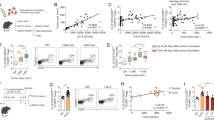Abstract
Even though many studies suggest that proteoglycans with their structurally determinative polysaccharide chains, the glycosaminoglycans (GAGs), are important mediators of cellular interactions, little is known about expression and possible functions of these macromolecules expressed by tumour cells during the transition from low to highly metastatic behaviour. Therefore, we investigated the cellular expression and secretion of GAGs in a syngeneic tumour system of DBA/2 mice consisting of a methylcholanthrene-induced low metastatic T lymphoma (Eb), its highly metastatic spontaneous variant (ESb), and a low metastatic derivative of ESb (ESb-MP), selected by its adherent growth properties. The [35S]-sulphate-labelled GAGs were isolated from in vitro cultivated cells and further characterized by separation on Sepharose CL 6B, on Mono-Q ion exchange chromatography, and alkali- and enzymatic digestion. In contrast to Eb-cells which produce chondroitin/dermatan sulphate (CS/DS) and heparan sulphate (HS) (cellular extract: CS/DS 67%, HS 33%; culture medium: CS/DS 61%, HS 39%) ESb- and ESb-MP-cells only express and secrete CS/DS. For ESb cells the CS portions consisted of 42% chondroitin-4-sulphate (CS-4) and 58% chondroitin-6-sulphate (CS-6), for ESb-MP cells of 23% CS-4 and 77% CS-6, for Eb cells of 16% CS-4 and 84% CS-6. The cell surface GAGs of the adherent variant ESb-MP contained a significantly higher portion of DS (65%) compared to ESb cells (25%). GAGs of all tumour cell lines studied had a mol. wt ranging from 35-40 kD compared to GAG molecular weight standards. Ion exchange chromatography indicated that differences in charge density between GAGs of these cell lines were minimal. These findings suggest that the different biological behaviour of the cell lines cannot be attributed to altered size and charge density of their GAG chains. However, highly metastatic ESb-cells secreted significantly more GAG than low metastatic Eb- and ESb-MP-cells. The possible consequences of the enhanced secretion of CS/DS by ESb-cells are discussed in terms of the postulated role of CS/DS in cellular adhesion, growth regulation and interactions with the immune system.
Similar content being viewed by others
Author information
Authors and Affiliations
Rights and permissions
About this article
Cite this article
Schwartz-Albiez, R., Steffen, I., Lison, A. et al. Expression and enhanced secretion of proteochondroitin sulphate in a metastatic variant of a mouse lymphoma cell line. Br J Cancer 57, 569–575 (1988). https://doi.org/10.1038/bjc.1988.130
Issue Date:
DOI: https://doi.org/10.1038/bjc.1988.130
- Springer Nature Limited
This article is cited by
-
Role of proteoglycans in tumor progression
Pathology & Oncology Research (1995)
-
Two human melanoma xenografts with different metastatic capacity and glycosaminoglycan pattern
Journal of Cancer Research and Clinical Oncology (1989)




